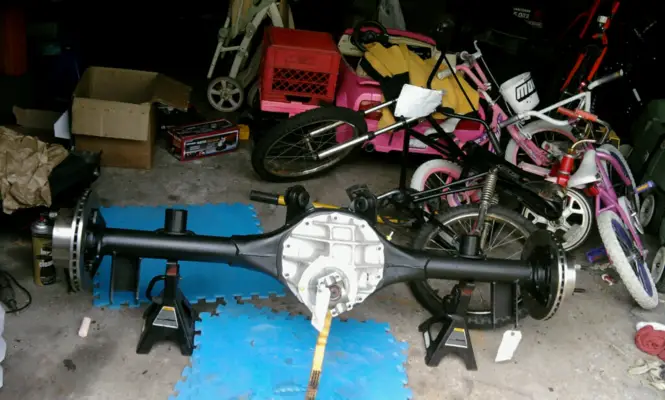The Quick Performance 9 inch comes with upper bushings in place. None of mine have had any axle seal or leak issues to date. Some have been in service over 10 years, ones has been into the 8's in the 1/4, still in place and going faster...
For what its worth, one of my driver Monte SS cars has full poly bushings with reinforced OEM arms and a bigger stock style mount rear sway bar, I either don't know what binding everyone is referring to or my car doesn't do it. Most of the rest of my cars end up with full solid/steel lowers and poly uppers for more drag car related service that all see street time.
The binding with poly bushings causes a false sense of greater control by creating understeer. The danger is when the suspension parts snap free of the bind and suddenly go into oversteer, this is called snap oversteer as you go from under to over without warning. If this happens to your car, you most likely would not be able to correct and likely would crash.
The other issue is binding can put a lot of undue stress on the suspension parts, frame, etc. The stock rubber bushings act like a crude ball joint, which is why roto joints are preferred over plain poly bushings.
The suspension parts that bind do not snap free unless the part breaks. The binding limits the travel of the suspension but the car does not suddenly go into oversteer. You need to stop your snap oversteer propaganda.
You need to stop falsely labeling others' statements as something they are not. Yes parts can snap free of a bind without breaking, because there are more than one axis of rotation with the rear suspension joints. The issue is plain poly bushings act like metal bushings and only have a single axis and inhibit the other axis, while rubber and roto do not. Perhaps snap free is a little too simple of a term, a better way to put it is a rise then reduction in the rate of bind, as binding affects and changes your wheel rate. Binding is inconsistent and unpredictable, which makes your suspension behave that way. Basically binding alters your wheel rate in unpredictable ways by increasing and decreasing it through suspension travel. If you can't predict how your is going to behave, then its unreliable and even dangerous.
I saw a test that was done on a Mustang rear 4 link, which is quite similar to our g body setup using different bushing. Stock rubber bushings cause 11lb/in of bind, metal ball joints on both ends of LCAs had 6lb/in, poly roto joints on one end of LCAs had 9lb/in, roto joints on both ends of LCAs had 26lb/in.
When they tested plain poly bushings, the results were complex, first inch of travel had 47 lb/in of binding, 2-3 inches of travel had 30lb/in of binding, which indicates a non clean range of motion like the other bushings. These tests were conducting by a performance suspension company called MM. All the results I posted were done with stock UCAs with rubber bushings, only the effects of LCAs whee tested in the given results. But is seems many here just do not care about binding, until they hit a bump on their favorite on ramp at high throttle and wonder why they are suddenly going backwards. Bind is a cause of snap oversteer.



